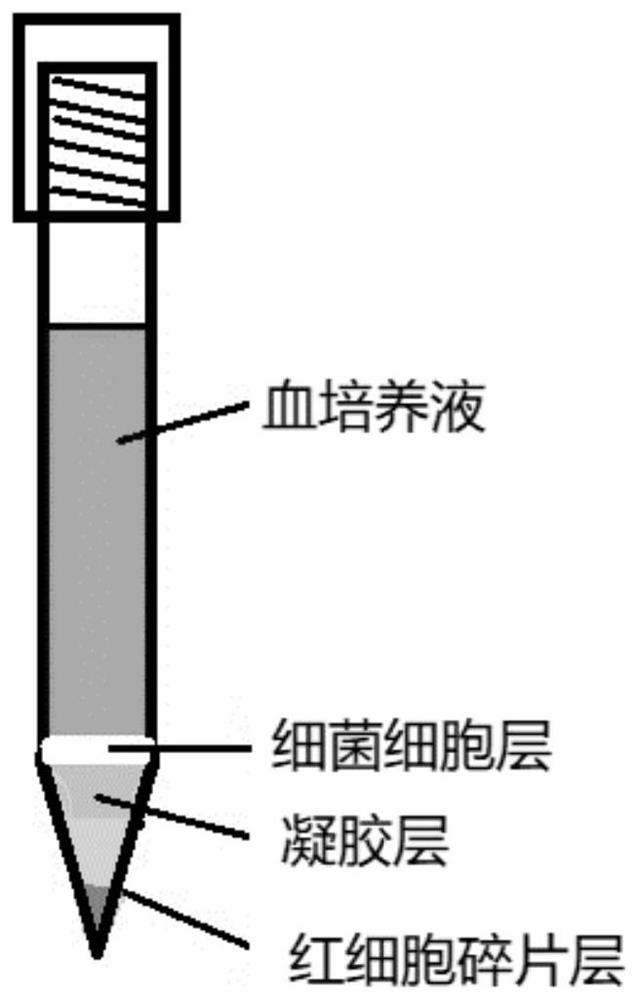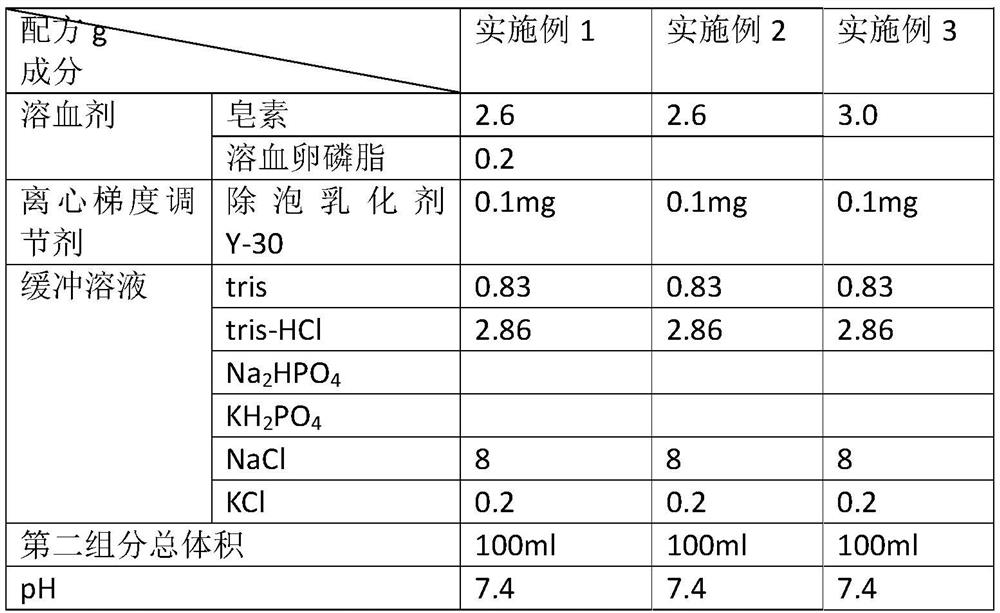Separation reagent, preparation method and applications of separation reagent, method for separating bacteria and gel extraction tube
A reagent and gel technology, which can be used in bacteria, separation of microorganisms, etc., can solve the problems of long time, low yield, and complicated operation.
- Summary
- Abstract
- Description
- Claims
- Application Information
AI Technical Summary
Problems solved by technology
Method used
Image
Examples
preparation example Construction
[0104] The embodiment of the present invention also provides a preparation method of the above separation reagent, comprising:
[0105] The gel that the embodiment of the present invention adopts is self-made gel, and the synthesis of gel comprises: Dimethyl silicone oil, hydroxyl silicone oil, silicon dioxide and silane coupling agent are (11-17) according to mass ratio: (0.8-3 ): (2-5): (0.2-1) after mixing in a ratio of cross-linking reaction to form a silicone polymer;
[0106] Preferably, the operation steps of the crosslinking reaction are as follows: after mixing dimethyl silicone oil and hydroxy silicone oil and heating to 100-120°C, adding silicon dioxide and silane coupling agent while stirring, and then stirring for 8-12 hours, the reaction ends Then vacuum defoaming at 150-170°C for 3-5 hours. Adopting the above method can ensure the density of the prepared gel and ensure the separation effect of the gel.
[0107] It should be noted that the gel can also be purch...
Embodiment 1- Embodiment 3
[0121] In terms of parts by weight for preparing 100 extraction tubes, each tube is 1ml.
[0122] The proportioning of the second component in the separation reagent of embodiment 1-embodiment 3 is as follows:
[0123]
[0124] It should be noted that there is no additional value in the table, and the unit is g.
[0125] The first component in the separation reagent of embodiment 1-embodiment 3 is organosilicon polymer, and the proportioning of first component and second component in the separation reagent of embodiment 1-embodiment 3 is as follows:
[0126]
[0127] The raw material ratio of the organosilicon polymer of the first component in the separation reagent of embodiment 1-embodiment 3 is as follows:
[0128]
[0129] The preparation method of the separating reagent of embodiment 1-embodiment 6 is identical, comprises:
[0130] Preparation method of the second component:
[0131] Hemolyzing reagents, buffers, and centrifugation gradients are mixed and ster...
Embodiment 4
[0137] Example 4: The first component is 10 grams of a gel with a trade name of “Anti-Radiation Organosilicon Serum Separation Gel” from Wuhan Desheng Biochemical Technology Co., Ltd., with a density of 1.042.
[0138] The second component includes 2 mg phospholipase C (Clostridium perfringens source phospholipase C, CAS: 9001-86-9), 0.01 × 10 -3 Gram Tween 80 and 0.6% PIPES buffer, ion regulator are the same as in Example 1, the total amount of the second component is 100 milliliters, and its pH is 7.2. 0.1 gram of the first component was added for every milliliter of the second component.
[0139] The preparation method of the separation reagent of embodiment 4 is basically the same as the preparation method of the separation reagent of embodiment 1.
PUM
 Login to View More
Login to View More Abstract
Description
Claims
Application Information
 Login to View More
Login to View More - R&D
- Intellectual Property
- Life Sciences
- Materials
- Tech Scout
- Unparalleled Data Quality
- Higher Quality Content
- 60% Fewer Hallucinations
Browse by: Latest US Patents, China's latest patents, Technical Efficacy Thesaurus, Application Domain, Technology Topic, Popular Technical Reports.
© 2025 PatSnap. All rights reserved.Legal|Privacy policy|Modern Slavery Act Transparency Statement|Sitemap|About US| Contact US: help@patsnap.com



